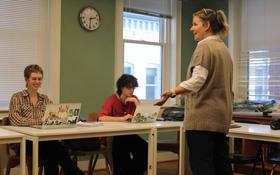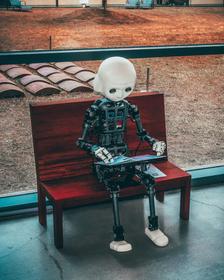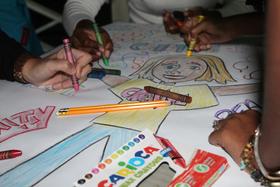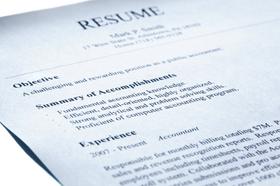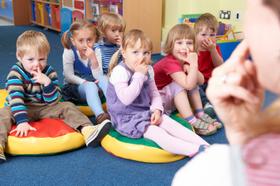You would think that education in the United States has been public since colonial days. But that is not the case. The earliest schools were private and religious schools. Only in the mid-19th century did governments begin to compel children to attend K-12 public schools. Here, then, is a brief timeline of private K-12 education.
| 143 b.c. | Chengdu Shishi High School was established in China. |
| 69 | Marcus Fabius Quintillianus founded his school of rhetoric in Rome, Italy. Quintillian was a native of Caligurris in Hispania. Among his pupils were Pliny the Younger and the historian Tacitus. Quintillian wrote a 12-volume treatise on rhetoric, Institutio Oratoria, which is considered, even in modern times, a foundational document on education. |
| 597 | The King's School, Canterbury, England, was established. It has the distinction of being the oldest private school in the world still operating. |
| 1441 | King's College Choir School, Cambridge, United Kingdom, was founded by King Henry VI to educate the boy choristers of the King's College Chapel Choir. The Choir School has been in more or less continuous existence ever since. |
| 1572 | Harrow, Harrow on the Hill, Middlesex, United Kingdom, opens. The rivalry between Eton and Harrow is rather like that between Exeter and Andover. Perhaps it's best to say that the four schools represent the acme of boarding schools and leave it at that. Queen Elizabeth granted the charter to a farmer to establish this school in the 16th century. Stuffy and formal, you might be thinking? Perhaps for North American 21st-century tastes. But don't let the boaters and gowns mask the reality that this is one of the finest institutions of learning in the world at the secondary level. If your son can make the grade here, the world is his oyster in every sense of that expression. |
| 1628 | Collegiate School was founded in Manhattan, New York, USA. It is the oldest private school in America still extant and operating. |
| 1799 | Johann Heinrich Pestalozzi started a school for orphans in Burgdorf. His writings on education inspired the study of pedagogy. |
| 1809 | Johann Friedrich Herbart established pedagogy as a discipline at the University at Gottingen. |
| 1837 | Friedrich Froebel creates Kindergarten or the Children's Garden. Kindergarten is the traditional first year of primary or elementary education for children in the United States. |
| 1848 | Stephen Girard's estate established Girard College in Philadelphia, Pennsylvania, for poor, white, fatherless boys. |
| 1856 | Dr. Shattuck founded Saint Paul's School, Concord, New Hampshire. Dr. George Cheyne Shattuck wanted his sons to attend school in the country. Indeed, in 1856, his country home in New Hampshire became the first home of what is now Saint Paul's School. The first headmaster was The Reverend Henry Coit, who ran St. Paul's until 1895. The school is situated on 2,000 bucolic New Hampshire acres. The school became a coeducational school in 1971. It is now one of six boarding schools in the U.S., which can claim to be 100% residential. |
| 1874 | The German Saturday School in Boston was founded. This was the first foreign language school in the United States. |
| 1881 | Annie Wright School, Tacoma, Washington, opens. An Episcopal bishop, The Right Reverend James Paddock, founded his school with the financial support of businessman Charles Wright. Bishop Paddock named the school in honor of Wright's daughter, Annie. The school was a girls' school until the earthquake of 1949 damaged Lowell School, the local boys' school. AWS set up temporary quarters for boys. The coeducational program expanded to 8th grade in the 1970s. |
| 1887 | The will of Bernice Pauahi Bishop founds and endows the Kamehameha Schools in Hawaii. Mrs. Bishop was the last direct descendant of Hawaii's royal family. She directed that the schools educate free of charge indigenous children of the Hawaiian islands. |
| 1890 | Taft School, Watertown, Connecticut, opens. Horace Dutton Taft was the brother of the 27th President of the United States. Taft was the second school he started, the other being a prep school for boys in Pelham Manor, New York. Mr. Taft's School in Watertown occupied a great barn of a Victorian home. (One can only imagine how cold and drafty those long Litchfield County winter days and nights must have been for the boys.) Horace Taft believed in educating the whole child long before such an approach was fashionable. Over the years, Taft School evolved with the times, admitting girls in the 1970s and making its superb education available to as wide a pool of candidates as possible, all the while remaining true to the ideals that its first headmaster both posited and embodied. |
| 1891 | Maria Bissell Hotchkiss founded The Hotchkiss School. Maria Bissell Hotchkiss had inherited a fortune from her husband, Benjamin Hotchkiss. He made his money manufacturing guns. After he had died, Mrs. Hotchkiss donated 65 acres of land to establish a school for boys. She wanted the school to be a feeder school for Yale University down by the shore in New Haven. Her original gift of 65 acres expanded over time into a magnificent campus of 645 acres of pristine Northwestern Connecticut countryside. Mrs. Hotchkiss' munificence also established a generous financial aid program that gave boys who could not otherwise afford the opportunity of attending The Hotchkiss School. The school became a coeducational institution in 1971. |
| 1896 | John Dewey established The Laboratory Schools in Chicago, Illinois, and thus began the movement known as progressivism in American education. |
| 1901 | Colonel Francis Parker started what is now the Francis W. Parker School. Parker and John Dewey sought to educate productive members of society to just teaching facts by rote. |
| 1905 | McCallie School, Chattanooga, Tennessee, opened. The Reverend T.H. McCallie, a Presbyterian minister, backed his sons' establishment of a college preparatory school for boys in 1905. The school was one of the first to adopt an Honor Code, which has shaped McCallie students today. The school has changed dramatically over the years, keeping up with the times in every way while still emphasizing its core mission of educating the whole child. I suspect that is one of the reasons why the school continues to thrive and prosper. There is a place for a boys' school in the 21st century. McCallie is living proof of that argument. |
| 1906 | Madeira School, McLean, Virginia, opens. According to Time Magazine's 1948 profile of Lucy Madeira Wing, she started her school to make money. One suspects that the truculent Miss Madeira was probably poking fun at society and the economic royalists she so avidly despised. Madeira is one of the nation's top boarding schools. And it has become so mainly because of Miss Madeira's insistence on her students disciplining their minds back when she ran the school. That noble tradition of academic discipline and character-building continues to this day. |
| 1906 | Father Sill established Kent School. The Reverend Frederick Herbert Sill was an Episcopal monk and a member of the Order of the Holy Cross. He established Kent School in rural Kent, Connecticut, in 1906 as a school for boys from families of modest means. Boarding schools at that time were places where boys from wealthy American families went to school. Father Sill, or Pater as he was called affectionately, was adamant that all his boys would learn the value of hard work, academic and otherwise. To this day, students have chores as part of their daily routine at Kent. His influence as an educator and leader was profound and led to the establishment at least one other school, South Kent School. |
| 1907 | Dr. Maria Montessori opened her Casa de Bambini in the slums of Rome. Ironically, her Montessori movement has spread worldwide, primarily in middle-class families who appreciated education. |
| 1910 | The Hershey Industrial School admitted its first class. The Milton Hershey School (as it has been known since 1951) was established by chocolate maker Milton Hershey and his wife as a home and school for “poor, healthy white, male orphans between the ages of 8 through 18 years of age.” |
| 1919 | Rudolf Steiner founded the first Waldorf School in Stuttgart, Germany. Steiner espoused a humanist philosophy, which he refined into anthroposophy. There are about 1,000 schools worldwide that follow Steiner's teachings. |
| 1919 | St. Thomas Episcopal Church, New York, New York, opened its Choir School. The church had recently hired Dr. T. Tertius Noble from York Minster, United Kingdom, to be its Organist and Choirmaster. The Rector, Dr. Ernest Milmore Stires, arranged to establish the school to educate the boy choristers who sang in the church's Choir of Men and Boys. The Choir School thrives and is the only residential church choir school extant in the United States. |
| 1931 | Edward Harkness gives Exeter Academy a substantial gift to transform teaching by placing students around a large oval table with their teacher. |
| 1934 | Mae Carden established the first Carden School in New York City. She advocated a more structured approach to the core subjects than she felt was offered in certain progressive schools. |
| 1935 | Lycée Français de New York opens. It is the first international school in the U.S. offering a course of study leading to the French Ministry of Education diploma. |
| 1962 | The National Association of Independent Schools was founded in New York City. Not all private schools belong to NAIS, but it has become a powerful advocate for private K-12 education. |
| 1990 | A voucher program known as the Milwaukee Parental Choice Program is enacted. |
| 1996 | Cristo Rey Jesuit High School opens in Chicago, Illinois, providing free education and work-study for urban children from families with limited options. |
| 2001 | Several state tax credit provisions for K-12 private education are upheld. |
Questions? Contact me via Facebook. @privateschoolreview





